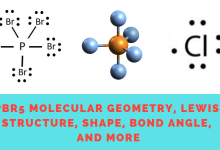
Nitrogen is more electronegative than hydrogen in each bond. The answer to the question “Is NH3 Polar or Nonpolar?” is, that NH3 is a polar molecule because it has three nitrogen-hydrogen bond dipoles that do not cancel out. Furthermore, the existence of two lone pairs on the opposite side of the two hydrogen atoms makes the molecule more polar and causes the H2S molecule to have a bent shape geometrical structure. H2S is a slightly polar molecule because of the minor difference in electronegativity values of hydrogen (2.2) and sulfur (2.58) atoms. This exerts an outward force on the bond due to which the shape of NH3 becomes unsymmetrical.

In addition, the NH3 Lewis structure shows that there is a lone pair of electrons present in nitrogen. This mismatch in electronegativity results in three dipole moments in one direction.Īs a result, ammonia has a net dipole moment, making it a polar molecule. The electronegativity difference between nitrogen (3.04) and hydrogen (2.2) causes the polarity of the NH3 molecule. SO2 has a bent form due to unbonded electrons on the sulfur and oxygen atoms. It’s a polar molecule because of the electronegativity difference between the sulfur (2.58) and oxygen (3.44) atoms. The gas sulfur dioxide (SO2) has a polar character. Due to unequal sharing of valence electrons, CO2 is nonpolar in nature. The two oxygen atoms from either direction of the carbon atom pull the electrons equally from both sides. CO2 Polar or NonpolarĬarbon dioxide ( CO2) is nonpolar because of its linear and symmetrical structure. Since chlorine is more electronegative than hydrogen, it pulls the bonded electron pair closer to it and obtains a partial negative charge, whereas hydrogen gains a partial positive charge. HCl (hydrochloric acid) is a polar molecule. Some examples of polar molecules are water (H 2O), Ethanol, Ammonia, and SO2 (Sulfur Dioxide). Partial charges are the little electrical charges that exist on different atoms, and the existence of partial charges indicates the presence of a polar bond. In hydrogen chloride, for instance, the H atom is slightly positively charged whereas the Cl atom is slightly negatively charged. Specifically, it is found that bonds between atoms of different elements are electrically inequivalent. The distribution of electrical charge over the atoms joined by the bond causes polarity.

The three hydrogen atoms are joined in the middle by a nitrogen atom.īecause nitrogen’s valence shell has five electrons, it must interact with three hydrogen atoms to meet the octet rule and generate ammonia, a stable molecule. Since the nitrogen atom has a single non-bonding lone pair of electrons, it acts as a repulsive force on the bonding orbitals.

NH3 molecular geometry is trigonal-pyramidal. Please refer to another interesting article, “Why is water a polar molecule?”. Examples of polar molecules include water, ammonia, sulfur dioxide, hydrogen sulfide, and ethanol.Įxamples of nonpolar molecules include helium, argon, krypton, and xenon. Nonpolar molecules are formed when electrons are shared equally between atoms in a diatomic molecule or when polar bonds in a bigger molecule cancel each other out. When the electronegativity of the bound atoms differs, polar molecules form.


 0 kommentar(er)
0 kommentar(er)
